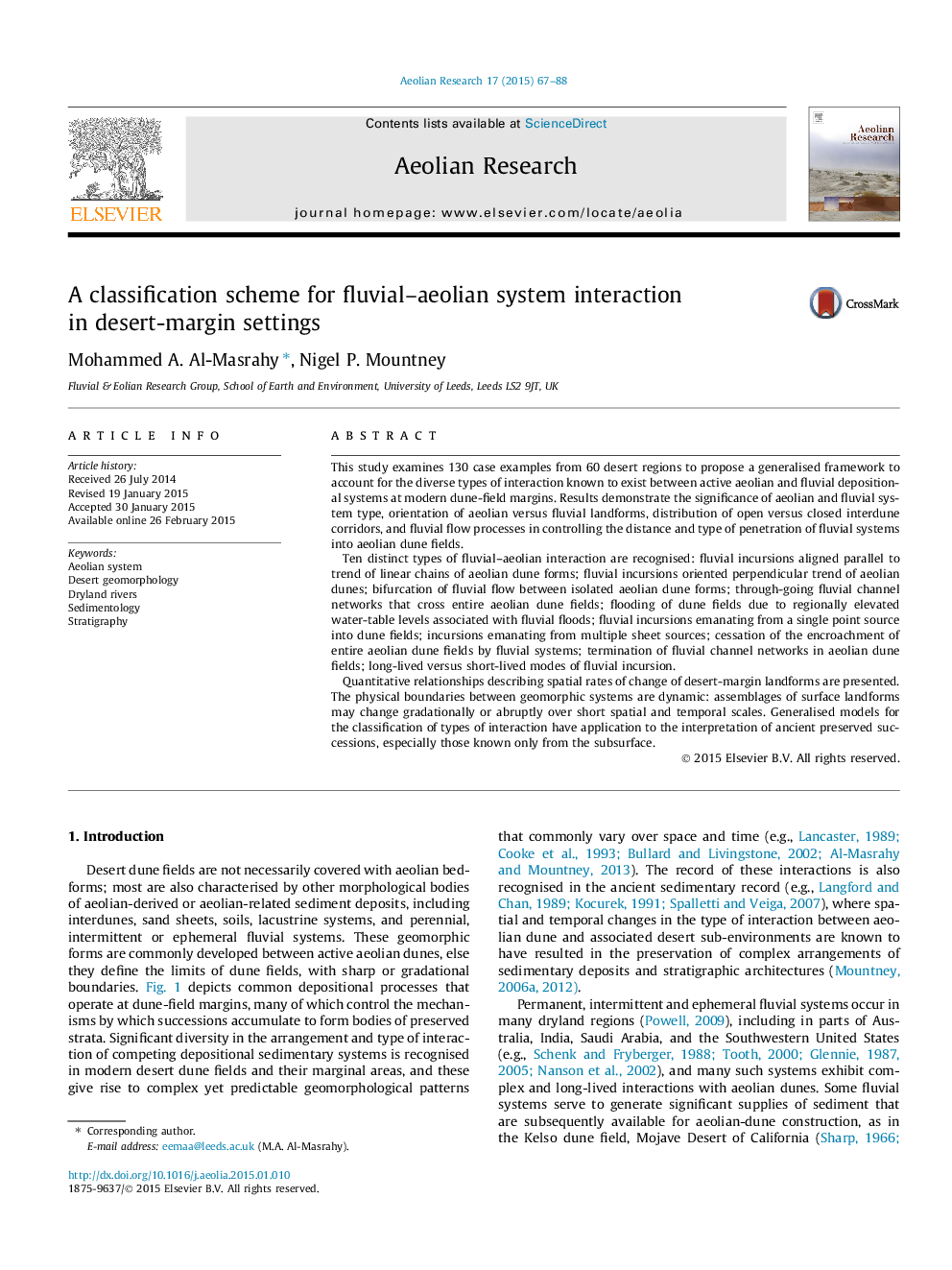| Article ID | Journal | Published Year | Pages | File Type |
|---|---|---|---|---|
| 4673759 | Aeolian Research | 2015 | 22 Pages |
•New classification scheme for types of interaction between fluvial aeolian systems.•Ten distinct types of fluvial–aeolian interaction discussed from 60 deserts.•130 examples of fluvial–aeolian interaction have been mapped using satellite imagery.•Quantitative assessment of geomorphic complexity in aeolian–fluvial interactions.•Discusses implications of interactions for palaeoenvironmental reconstruction.
This study examines 130 case examples from 60 desert regions to propose a generalised framework to account for the diverse types of interaction known to exist between active aeolian and fluvial depositional systems at modern dune-field margins. Results demonstrate the significance of aeolian and fluvial system type, orientation of aeolian versus fluvial landforms, distribution of open versus closed interdune corridors, and fluvial flow processes in controlling the distance and type of penetration of fluvial systems into aeolian dune fields.Ten distinct types of fluvial–aeolian interaction are recognised: fluvial incursions aligned parallel to trend of linear chains of aeolian dune forms; fluvial incursions oriented perpendicular trend of aeolian dunes; bifurcation of fluvial flow between isolated aeolian dune forms; through-going fluvial channel networks that cross entire aeolian dune fields; flooding of dune fields due to regionally elevated water-table levels associated with fluvial floods; fluvial incursions emanating from a single point source into dune fields; incursions emanating from multiple sheet sources; cessation of the encroachment of entire aeolian dune fields by fluvial systems; termination of fluvial channel networks in aeolian dune fields; long-lived versus short-lived modes of fluvial incursion.Quantitative relationships describing spatial rates of change of desert-margin landforms are presented. The physical boundaries between geomorphic systems are dynamic: assemblages of surface landforms may change gradationally or abruptly over short spatial and temporal scales. Generalised models for the classification of types of interaction have application to the interpretation of ancient preserved successions, especially those known only from the subsurface.
